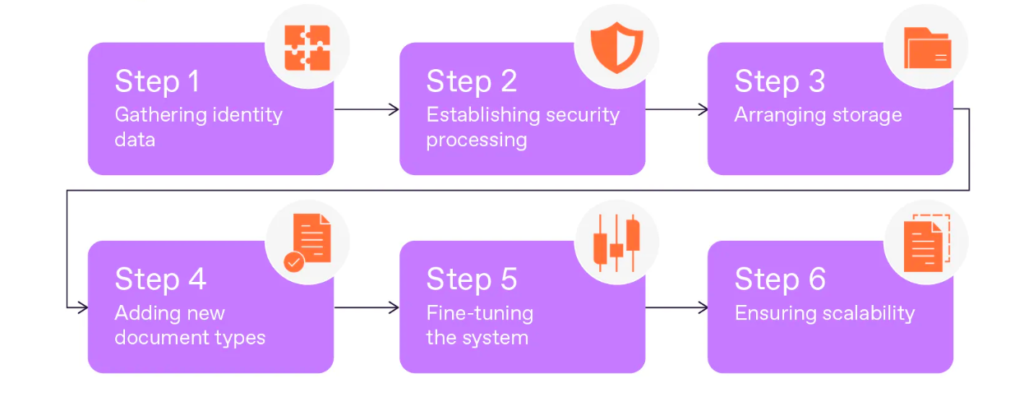In recent years, the integration of artificial intelligence (AI) and machine learning (ML) in various sectors has dramatically transformed how businesses operate. In particular, cloud security is one area where these technologies have made a significant impact. The expansion of cloud computing has enabled companies to store, access, and manage vast amounts of data remotely. However, this rapid adoption has also introduced new security challenges that need to be addressed. AI and ML provide innovative solutions to many of these security concerns, making cloud environments safer and more resilient to cyber threats.
In this article, we will explore how AI and machine learning can enhance cloud security, the challenges they address, the mechanisms by which they operate, and real-world applications of these technologies in safeguarding cloud infrastructures.
Key Takeaways
- AI and ML significantly enhance cloud security by automating threat detection and response.
- Machine learning helps predict future threats and vulnerabilities, offering proactive protection.
- Real-time data analysis allows AI-powered systems to identify anomalies and respond quickly to mitigate damage.
- Despite their benefits, AI and ML in cloud security face challenges, including data quality issues and evolving attack tactics.
What is Cloud Security?
Cloud security is the whole bundle of technology, protocols, and best practices that protect cloud computing environments, applications running in the cloud, and data held in the cloud. Securing cloud services begins with understanding what exactly is being secured, as well as, the system aspects that must be managed.
As an overview, backend development against security vulnerabilities is largely within the hands of cloud service providers. Aside from choosing a security-conscious provider, clients must focus mostly on proper service configuration and safe use habits. Additionally, clients should be sure that any end-user hardware and networks are properly secured.
The full scope of cloud security is designed to protect the following, regardless of your responsibilities:
- End-user hardware:computers, mobile devices, Internet of Things (IoT) devices, etc.
- Physical networks:routers, electrical power, cabling, climate controls, etc.
- Data storage:hard drives, etc.
- Data servers :core network computing hardware and software
- Computer virtualization frameworks:virtual machine software, host machines, and guest machines
- Operating systems (OS): software that houses
- Middleware:application programming interface (API) management,
- Runtime environments: execution and upkeep of a running program
- Data:all the information stored, modified, and accessed
- Applications: traditional software services (email, tax software, productivity suites, etc.)
Critical Components of Cloud Security
Cloud security encompasses various important elements that function harmoniously to establish a safe and protected environment. The following components play a significant role:
1 Safeguarding Data Privacy and Compliance
This aspect involves implementing measures to safeguard highly sensitive information from unauthorized access and potential data breaches. It includes employing data encryption, tokenization, and effective key management practices. Moreover, compliance necessitates adhering to regulatory standards established by organizations like the GDPR and HIPAA in order to ensure comprehensive data protection.
2 Ensuring Identity Verification and Controlled Access

Identity verification and controlled access aim to ascertain that only authorized individuals can gain entry to specific resources within the system. Various methods are employed for authentication purposes, ranging from passwords to more sophisticated techniques like two-factor authentication (2FA) or biometrics. Additionally, managing user identities, determining their access permissions, as well as continuously monitoring their activities fall under this component.
3 Detecting Threats and Implementing Responses
This part involves identifying potential threats or malicious activities within the cloud framework through tools such as Intrusion Detection Systems (IDS) and Intrusion Prevention Systems (IPS). Once detected, appropriate actions need to be taken, including isolating affected systems, deploying countermeasures against attacks, and recovering from breaches or network intrusions.
4 Preserving Network Security
In cloud environments, network security concentrates on defending the integrity of the overall network infrastructure and its usability by authorized entities. This involves securing connections across private clouds, public clouds, and hybrid setups, to mitigate risks associated with network-based attacks. Additionally, the underlying network infrastructure requires proper protection against any potential vulnerabilities.
5 Devising Robust Security Configurations
Implementing secure configurations pertains to arranging various aspects of cloud platforms, such as software, hardware, virtual machines, and APIs, in a manner that effectively reduces vulnerabilities while also minimizing the attack surface. This includes hardening virtual machines, securing APIs, and setting up robust firewalls.
Types of Cloud Security
Following are the 6 Types of Cloud Security –
- Infrastructure as a Service (IaaS) Security
- Platform as a Service (PaaS) Security
- Software as a Service (SaaS) Security
- Firewall Security
- Hybrid Cloud Security
- Multi-Cloud Security
1 Infrastructure as a Service (IaaS) Security
Infrastructure as a Service, or IaaS, is a familiar term in cloud computing. In this model, businesses lease essential equipment like storage, hardware, servers, and networking components that power their operations.
In the IaaS landscape, security isn’t the sole responsibility of one party. Rather, it’s a shared endeavor. The service provider takes up the mantle of securing the basic infrastructure. This includes the physical security aspects, the server hardware, and the virtualization layer. Meanwhile, the client organization holds the fort on its end by securing the operating systems, applications, data, and network traffic on its portion of the IaaS platform.
The security toolbox for IaaS might comprise elements like access controls, network firewalls, encryption, and systems designed to sniff out intrusions.
2 Platform as a Service (PaaS) Security
Platform as a Service, which goes by the acronym PaaS, is another model in the cloud computing space. This model provides users a platform and environment that supports application development, management, and delivery. Notable examples include Google App Engine, AWS Elastic Beanstalk, and Microsoft Azure.
Like its IaaS cousin, PaaS security also hinges on a shared responsibility model. While the cloud service provider is tasked with securing the platform, the underlying infrastructure, operating system, and backend services, the customer steps in to secure the applications they develop and deploy on the PaaS platform, along with the data that these applications process or store.
For PaaS, security measures may encompass secure coding practices, application security testing, and access controls at the application level.
3 Software as a Service (SaaS) Security

Software as a Service, colloquially known as SaaS, represents a cloud computing model where a service provider hosts applications and delivers them to customers via the Internet. Familiar faces in this sphere include Google Workspace, Salesforce, and Microsoft 365.
With SaaS, the service provider shoulders much of the burden when it comes to security. Their job is to secure the infrastructure, platform, and software applications, often going further to incorporate built-in security features like data encryption and user authentication. As for the customers’ part in this security dance involves managing their data and ensuring the right user access controls are in place.
4 Firewall Security
Essentially, firewall security operates as a surveillance system for network traffic, monitoring and managing both inbound and outbound activity according to pre-set safety regulations. These firewalls form a protective layer between secure internal systems and potentially harmful external networks, including the likes of the Internet.
In cloud platforms, security can be enhanced through specialized cloud-based firewalls provided by the cloud service or third-party solutions engineered for such deployments. These firewalls often come with additional capabilities such as access regulation, intrusion spotting, and backing for Virtual Private Networks (VPNs).
5 Hybrid Cloud Security
The term ‘Hybrid Cloud’ is employed to describe a computational setting that blends both private and public clouds, facilitating the exchange of data and applications between them. If a project running on a private cloud needs more resources, it can utilize the public cloud’s resources, maintaining operational flow without accumulating extra charges.
The focus of Hybrid Cloud Security is to protect this composite environment. This encompasses creating and managing consistent security protocols across the public and private sections of the hybrid cloud. It also involves tackling the increased intricacy brought about by liaising with multiple cloud service providers.
6 Multi-Cloud Security
The concept of Multi-Cloud revolves around employing a variety of cloud computing and storage services within one cohesive network structure. Essentially, this means scattering cloud assets, software, applications, and the like across multiple environments that are cloud-hosted, incorporating a cocktail of public, private, and hybrid cloud solutions.
Advantages And DisAdvantages of cloud security
| Advantages | Disadvantages |
|---|---|
| Real-time Threat Detection: Quick threat identification and response. | Data Quality: Models rely on high-quality data; poor data can lead to errors. |
| Predictive Security: Predicts future threats and vulnerabilities. | False Positives: Can generate unnecessary alerts. |
| Automated Response: Instant threat containment and mitigation. | Evolving Threats: Cybercriminals may adapt faster than models can detect. |
| Behavioral Analytics: Detects abnormal user activity. | Cost and Complexity: Implementing AI systems can be expensive and complex. |
| Continuous Learning: Models improve over time with more data. | Integration Issues: Can be challenging to integrate with existing systems. |
How does cloud security work?
Every cloud security measure works to accomplish one or more of the following:
- Enable data recovery in case of data loss
- Protect storage and networks against malicious data theft
- Deter human error or negligence that causes data leaks
- Reduce the impact of any data or system compromise
Cloud security risks
What are the security issues in cloud computing? Because if you don’t know them, then how are you supposed to put proper measures in place? After all, weak cloud security can expose users and providers to all types of cyber security threats. Some common cloud security threats include:
- Risks of cloud-based infrastructure including incompatible legacy IT frameworks, and third-party data storage service disruptions.
- Internal threats due to human error such as misconfiguration of user access controls.
- External threats caused almost exclusively by malicious actors, such as malware, phishing.
The biggest risk with the cloud is that there is no perimeter. Traditional cyber security focused on protecting the perimeter, but cloud environments are highly connected which means insecure APIs (Application Programming Interfaces) and account hijacks can pose real problems. Faced with cloud computing security risks, cyber security professionals need to shift to a data-centric approach.
How to Secure the Cloud

Fortunately, there is a lot that you can do to protect your own data in the cloud. Let’s explore some of the popular methods.
Encryption is one of the best ways to secure your cloud computing systems. There are several different ways of using encryption, and they may be offered by a cloud provider or by a separate cloud security solutions provider:
- Communications encryption with the cloud in their entirety.
- Particularly sensitive data encryption, such as account credentials.
- End-to-end encryption of all data that is uploaded to the cloud.
Within the cloud, data is more at risk of being intercepted when it is on the move. When it’s moving between one storage location and another, or being transmitted to your on-site application, it’s vulnerable. Therefore, end-to-end encryption is the best cloud security solution for critical data. With end-to-end encryption, at no point is your communication made available to outsiders without your encryption key.
Configuration is another powerful practice in cloud security. Many cloud data breaches come from basic vulnerabilities such as misconfiguration errors. By preventing them, you are vastly decreasing your cloud security risk. If you don’t feel confident doing this alone, you may want to consider using a separate cloud security solutions provider.
Here are a few principles you can follow:
- Never leave the default settings unchanged. Using the default settings gives a hacker front-door access. Avoid doing this to complicate a hacker’s path into your system.
- Never leave a cloud storage bucket open. An open bucket could allow hackers to see the content just by opening the storage bucket’s URL.
- If the cloud vendor gives you security controls that you can switch on, use them. Not selecting the right security options can put you at risk.
Check your cloud provider’s security
Security should be one of the main points to consider when it comes to choosing a cloud security provider. That’s because your cyber security is no longer just your responsibility: cloud security companies must do their part in creating a secure cloud environment — and share the responsibility for data security.
However, getting the right answers to some basic questions gives you better confidence that your cloud assets will be safe. In addition, you will be more aware of whether your provider has properly addressed obvious cloud security risks. We recommend asking your cloud provider some questions of the following questions:
- Security audits: “Do you conduct regular external audits of your security?”
- Data segmentation: “Is customer data is logically segmented and kept separate?”
- Encryption: “Is our data encrypted? What parts of it are encrypted?”
- Customer data retention: “What customer data retention policies are being followed?”
- User data retention: “Is my data is properly deleted if I leave your cloud service?”
- Access management: “How are access rights controlled?”
Also Read: How Do Cloud Networking Solutions Enhance Data Security And Privacy?
Conclusion
AI and machine learning are rapidly transforming the landscape of cloud security, offering powerful tools for threat detection, automated responses, predictive analysis, and vulnerability management. By integrating these technologies, organizations can improve the efficiency, accuracy, and resilience of their cloud security systems. However, challenges such as data quality, false positives, and the evolving nature of cyber threats must be addressed for AI and ML to reach their full potential in cloud security.
FAQs
1. What is cloud security, and why is it important?
Cloud security involves protecting cloud-based data, applications, and services from cyber threats. It’s important because organizations store sensitive data and critical workloads in the cloud, making them targets for cyberattacks.
2. How do AI and ML contribute to cloud security?
AI and ML enhance cloud security by automating threat detection, improving response times, predicting future attacks, and continuously learning from security incidents to improve defense mechanisms.
3. Can AI and ML prevent all cloud security breaches?
While AI and ML improve threat detection and response, they cannot guarantee the prevention of all breaches. They are part of a comprehensive security strategy that includes other measures like encryption, firewalls, and strong authentication.
4. How does machine learning improve threat detection in the cloud?
Machine learning algorithms analyze historical data to identify patterns and detect anomalies that may indicate a threat, even if it is a new or previously unseen type of attack.
5. What is behavioral analytics in cloud security?
Behavioral analytics involves monitoring user and system behavior to establish a baseline. When behavior deviates from this baseline, it can trigger alerts or automatic security responses.
6. Can AI help with compliance in cloud security?
Yes, AI can assist with maintaining compliance by continuously monitoring cloud configurations, identifying non-compliant settings, and ensuring that organizations adhere to industry regulations and standards.
7. What are the limitations of using AI in cloud security?
Limitations include challenges with data quality, false positives, evolving cyber threats, and the cost and complexity of implementing AI-driven security solutions.

